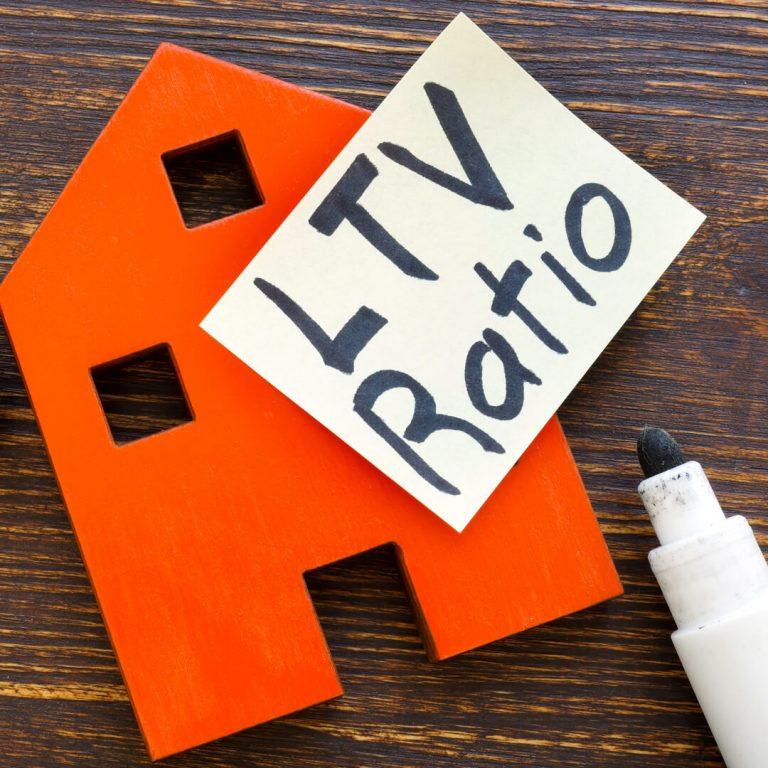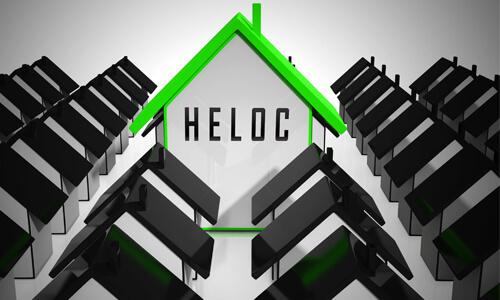You’ll likely take out multiple loans in your life. Some will be secured by a piece of property like a house or a vehicle as collateral. This just means that if you default on the secured loan, the financial institution that lent you the money won’t be left high and dry; there is physical property to back up the loan.
With secured loans, you’ll hear the term loan-to-value (LTV) ratio. At times, banks and credit unions also mention a combined loan-to-value (CLTV) ratio. It’s good to know what LTV and CLTV mean and how they affect your loan approval and interest rate before applying for a secured loan, such as a new mortgage, refinance, auto loan, home equity line of credit (HELOC) or home equity loan.
What does loan-to-value (LTV) mean?
When you apply for a loan, the lending institution will consider several factors. This typically includes your ability to repay the loan, which is determined by verifying your income and calculating your debt-to-income (DTI) ratio. Lenders also look at your credit report and credit score to find out if you have a history of repaying your credit card debt and other loans on time and as agreed.
For secured loans, the LTV ratio is another important factor because it helps the lender quantify the risk it’s taking to lend you money. To determine LTV, the lender compares the loan amount to the current market value of the property being used as collateral for the loan to ensure that the former doesn’t exceed or come too close to the latter. If it does, lenders most likely will not extend you a loan.
How do you calculate LTV?
To calculate LTV, simply divide the loan amount by the current market value of the property. The higher the LTV, the greater the risk for the lender. Generally, an LTV above 80% is considered high, making it more difficult to get approved or get a lower interest rate. The lower an LTV goes below 80%, the easier it is to get approved and qualify for the best interest rates.
One couple’s financial journey demonstrates two examples of LTV ratios, one for an original home mortgage and another for a refinance.
When they first got married, Mary and Pat built a budget for their new household, in which they used budget rules to ensure they were consistently saving for a down payment of at least 20% Once they had $100,000 set aside, they began shopping for a home within their budget.
The couple signed a contract to buy their first home for $425,000, which was $10,000 above the listing price because there was a bidding war between interested buyers. So, Mary and Pat applied for a $325,000 mortgage ($425,000 minus their $100,000 down payment, which equated to 23.5% of the sale price). As part of the mortgage process, the home was appraised for $415,000, resulting in a 79% LTV ratio ($325,000 divided by $415,000). Since the LTV was below 80%, it helped get their mortgage application approved.
Now, let’s say the home was appraised at the sale price, the LTV would have decreased to 76% ($325,000 divided by $425,000). As you can see, when the appraisal value goes up in comparison to the loan amount, LTV decreases, further reducing a lender’s risk.
Several years later, interest rates went down, so Mary and Pat decided to refinance at the lower rate to reduce their monthly mortgage payment. In this case, the couple was starting out with a lower loan balance of $300,000. Moreover, an appraisal indicated that their home’s value had skyrocketed to $600,000. The LTV for their refinance was 50% ($300,000 divided by $600,000), which not only helped them get approved but meant they qualified for one of the best rates available at the time.
By comparison, what’s CLTV?
In the examples above, only Mary and Pat’s primary mortgage was used to calculate LTV. In the event they ever decide to take out a second mortgage like a HELOC, the lending institution will want to expand the way they look at LTV because there will be more than one loan secured by their home.
In such cases, the lender will calculate the CLTV by adding up the combined total of all loans with their home as collateral. Here’s what that will look like if the home is valued at $625,000:
- The existing mortgage balance is $295,000
- Mary and Pat are applying for a $45,000 HELOC
- The CLTV is 55%, calculated by dividing $340,000 (the total of $295,000 and $45,000) by $625,000
If they later apply for a third mortgage on their home, the CLTV will include the balance of their first and second mortgages along with the amount of the new loan.
Why should borrowers pay attention to LTV and CLTV?
Financial institutions use LTV and CLTV to determine the following:
- Whether or not to approve your secured loan: With a higher LTV/CLTV, the lender has more at risk. That, plus a poor credit score and a higher-than-desired DTI could result in a loan denial.
- What interest rate you’ll be charged: A lower LTV means less risk, so the lender is more likely to offer you a lower interest rate and vice versa for a higher LTV.
- If Private Mortgage Insurance (PMI) is required: You need a down payment of 20% of the sale price to avoid PMI if you’re applying for a conventional mortgage loan, i.e., one not backed by a government program like an FHA or VA loan in which smaller down payments are needed. Assuming the sale price matches the appraised value, that equates to an 80% LTV.
When it comes to HELOCs and home equity loans, the maximum CLTV allowed may vary by lender, but it’s typically around 85% (Quorum allows up to 90% CLTV with their HELOCs).
Although you can’t control the real estate market, maintaining the interior and exterior of your home is the easiest way to help boost the amount your home will appraise for when applying for any loan it is securing. Here’s a great article for how to make your home stand out.






Comments Section
Please note: Comments are not monitored for member servicing inquiries and will not be published. If you have a question or comment about a Quorum product or account, please visit quorumfcu.org to submit a query with our Member Service Team. Thank you.